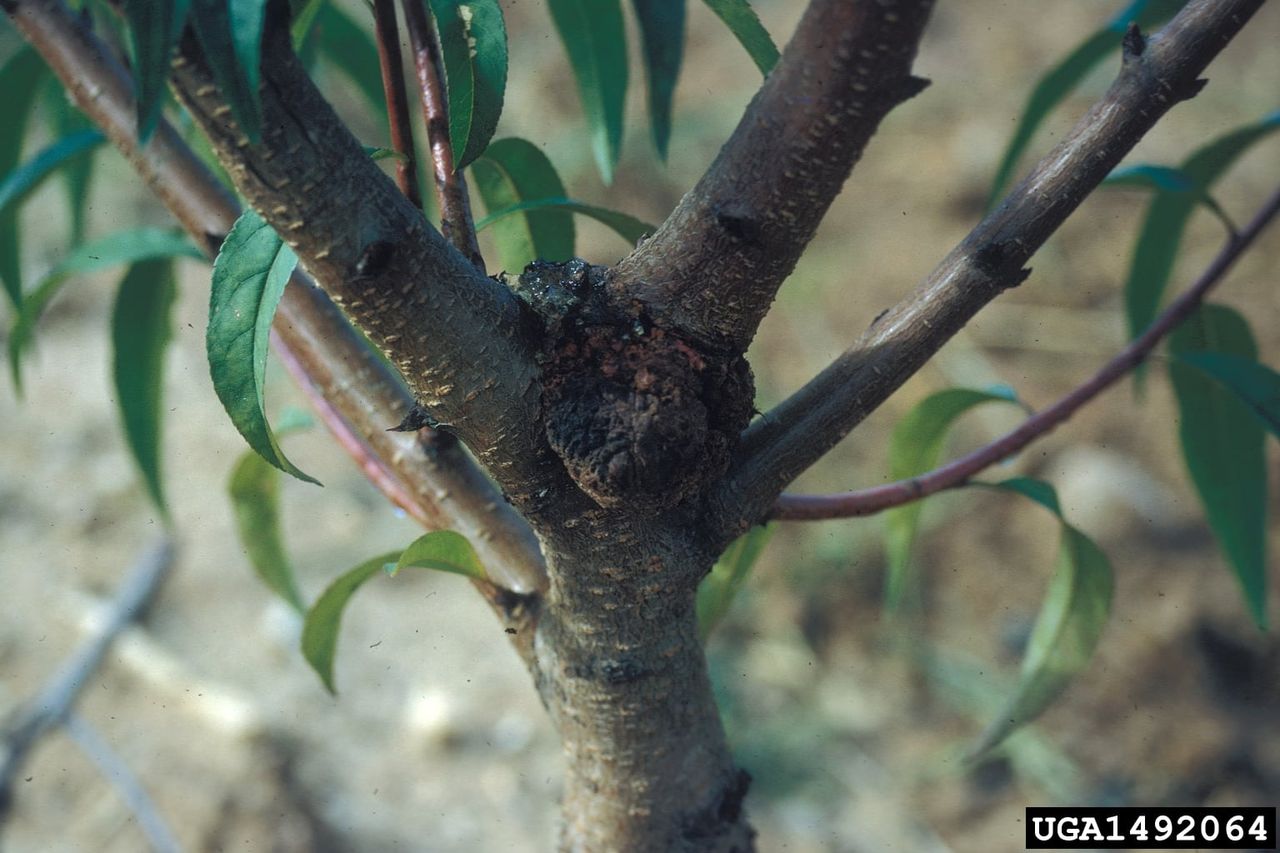Apricot Crown Gall Symptoms: How To Treat Apricot Crown Gall Disease


The sweet blush of ripe apricots and their tangy, juicy goodness are summer treats not to be missed. Unfortunately, we can't grow trees in a bubble and they are prey to many types of disease and pest problems. An apricot with crown gall is a cause for concern. What causes apricot crown gall and how do you recognize the signs? Further information will be revealed to help you know how to treat apricot crown gall and protect these wonderful fruits.
What Causes Apricot Crown Gall?
Galls are very common distortions on a wide variety of plants. They may come from disease abnormalities or from an insect. In the case of the crown gall of apricot, the pest is actually a bacterium. There are no chemical corrections for the disease, but it can be prevented fairly simply. The bacteria responsible is Agrobacterium tumefaciens (syn. Rhizobium radiobacter). The bacteria live in soil and survives for many seasons. It may also be harbored in infected plant tissue, even dropped leaves. It spreads through water splashed from the soil and easily spreads. Infections are acquired through injury in the tree's tissue. These may be from mechanical injury, animal damage, or insect activity. It often occurs at the plant's graft wound but also as an after-effect of pruning. Wounds must be less than 24 hours old to be susceptible to penetration from the bacteria which causes crown gall of apricot.
Apricot Crown Gall Symptoms
If your tree has tumor-like protrusions, it may be infected. Apricot crown gall symptoms appear within 10 to 14 days from infection. The bacteria cause cells to form abnormally and result in overgrowth on the roots and crown of the tree. An apricot with crown gall produces soft, spongy galls, very different from galls that occur from other sources. Galls are up to 4 inches (10 cm.) in diameter and begin white and fleshy but age to tan in color. The bacteria's action results in tissues that become disorganized and interrupt normal food and water distribution. Over time the tree will decline.
How to Treat Apricot Crown Gall
Commercial growers have access to a biological control, but it is not yet widely available for home gardeners. The best defense is to only plant certified disease-free plants. The disease is most prevalent in poorly drained, alkaline soil and where insect damage is possible. Plant and site selection, as well as crop rotation, are the most effective means of control. Prevent insect pests and rodent damage and provide good cultural care for a healthy tree that can survive the disease for years if it is accidentally introduced. It is important to prevent any injury to young plants as well, which are the most commonly affected.
Gardening tips, videos, info and more delivered right to your inbox!
Sign up for the Gardening Know How newsletter today and receive a free copy of our e-book "How to Grow Delicious Tomatoes".

Bonnie Grant is a professional landscaper with a Certification in Urban Gardening. She has been gardening and writing for 15 years. A former professional chef, she has a passion for edible landscaping.
-
 Never Use Homemade Compost Until It Passes This Simple Radish Test
Never Use Homemade Compost Until It Passes This Simple Radish TestThe radish test is a foolproof trick for knowing whether your homemade compost is ready for planting – or if it could harm the health of your plants.
By Mary Ellen Ellis
-
 Best Trees For Containers: Create A Potted Grove On Your Porch With These 8 Compact Varieties
Best Trees For Containers: Create A Potted Grove On Your Porch With These 8 Compact VarietiesWe may not always think of trees as being obvious candidates for pots, but there are a few that not only thrive but flourish. Here are some of the best trees for containers
By Teo Spengler